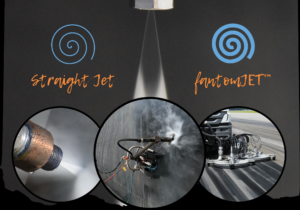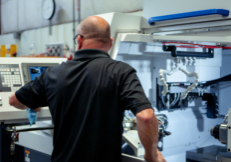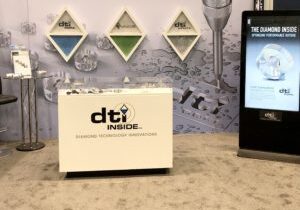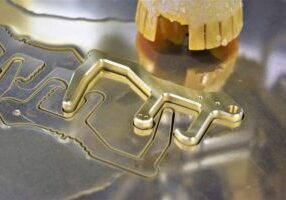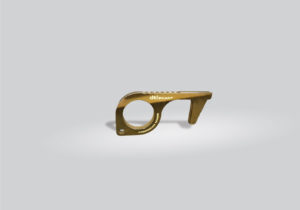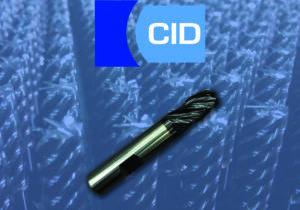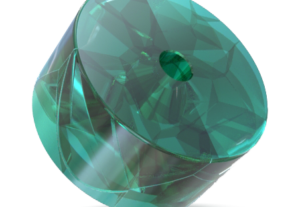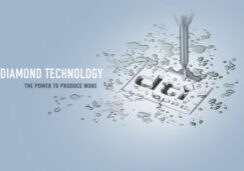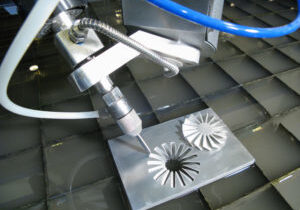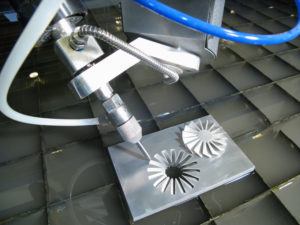
Waterjet, Laser, Plasma or Oxyacetylene? The Perks of Using Each Method
When it comes to machine operations there are many options available. Each method — waterjet, laser, plasma and oxyacetylene — has its own list of pros and cons that must be assessed by the metal or material crafter. Find out which one is better at cutting thinner plates vs. thicker plates. Evaluate which one may be more cost effective or worth the investment. Note what method might take a while to complete. We take a look at a few of the advantages and disadvantages of each of them in order to give you a little insight into your research.
Diamond-Powered Water Jet Cutting
Water jet cutting is known to be powerful enough to cut through almost any material. Water jet cutting uses an ultra-high pressure stream of water defined by a diamond orifice and combined with an abrasive grit in order to cut through the material. DTI diamond orifices make cutting reliable and predictable and last almost 10 times as long as ruby or sapphire based orifices. Water jet cutting has little to no heat distortion, secondary operations are often not needed and most will say that water jet cutting has better accuracy than lasers.
One notable disadvantage of a diamond-orifice water jet cutter is the time it takes to complete a project. A water jet system usually has a higher entry cost than plasma or oxyacetylene cutting machines, but the results, performance, and longevity of diamond orifices used in waterjet applications are second to none.
Laser Cutting
For sheet material including stainless steel and aluminum, laser cutting is king. Able to cut precise contours and small holes, the accuracy and quality of laser cutting is very good. One of the most important considerations of laser cutters is their reliability. It is possible to set up a laser cutting project and then leave the project, even overnight, while cutting is in process. Lasers have very low HAZ and are a good choice for metals and non-metals.
Unfortunately, quality always comes with a cost. Lasers are usually the most expensive machine cutters on the market and have very high upkeep and repair costs. There is also no way to cut with multiple heads on one standard machine due to the complete beam delivery.
Plasma Cutting
For those who need to machine cut on a budget, plasma cutting has the lowest operating costs when compared to other processes. The purchase price isn’t the lowest but the increase in productivity level offers a quick return on investment. Plasma uses a high-speed electrically charged gas jet to cut through thicker steel, stainless steel, and aluminum. This method is ideal for sheet materials with a narrow HAZ and low consumable costs.
These machines are far from quiet, especially when cutting through larger portions of metal. They can also give off unwanted fumes if the cutting isn’t done underwater. It is possible to use multiple torches at one time but the additional costs are a heavy factor to consider. What you gain in time you lose in quality. The plasma cutter can only cut metal materials and the cutting edge isn’t as precise as you would expect from a laser or water jet.
Oxyacetylene Cutting
One of the oldest cutting processes for mild steel is oxyacetylene (oxy-fuel) or torch cutting. This is the preferred method for cutting through thick plate. There are no electrical requirements when it comes to using oxy-fuel cutting and it can be used by a machine or by hand which makes it easily transportable. As far as entry costs go, this machine has some of the lowest across the field.
While the oxy-fuel system is a powerful tool for cutting through thick plates, it is less suited for stainless steel and aluminum and often limited to cast iron or mild to low alloy steels. There is a large heat affected zone which often causes material warping on thinner materials which makes oxy-fuel cut products sometimes easier to spot. Depending on the size of the metal to be cut, and in comparison to plasma cutting, using oxyacetylene fuel based systems to make machine cuts is known to be a lengthy process.
Which One Is The Best? It Depends:
• How thick are the materials to be cut? For very thin, go with the laser; for very thick, use oxy-fuel or water jet.
• How important is edge quality? Most steel plates cut by plasma are fine.
• Is there wiggle room for HAZ? If there is no room for heat affect or warping, use a water jet.
Take a moment to think about your project and what is most important to your individual circumstances to achieve success.
Share This Story, Choose Your Platform!

